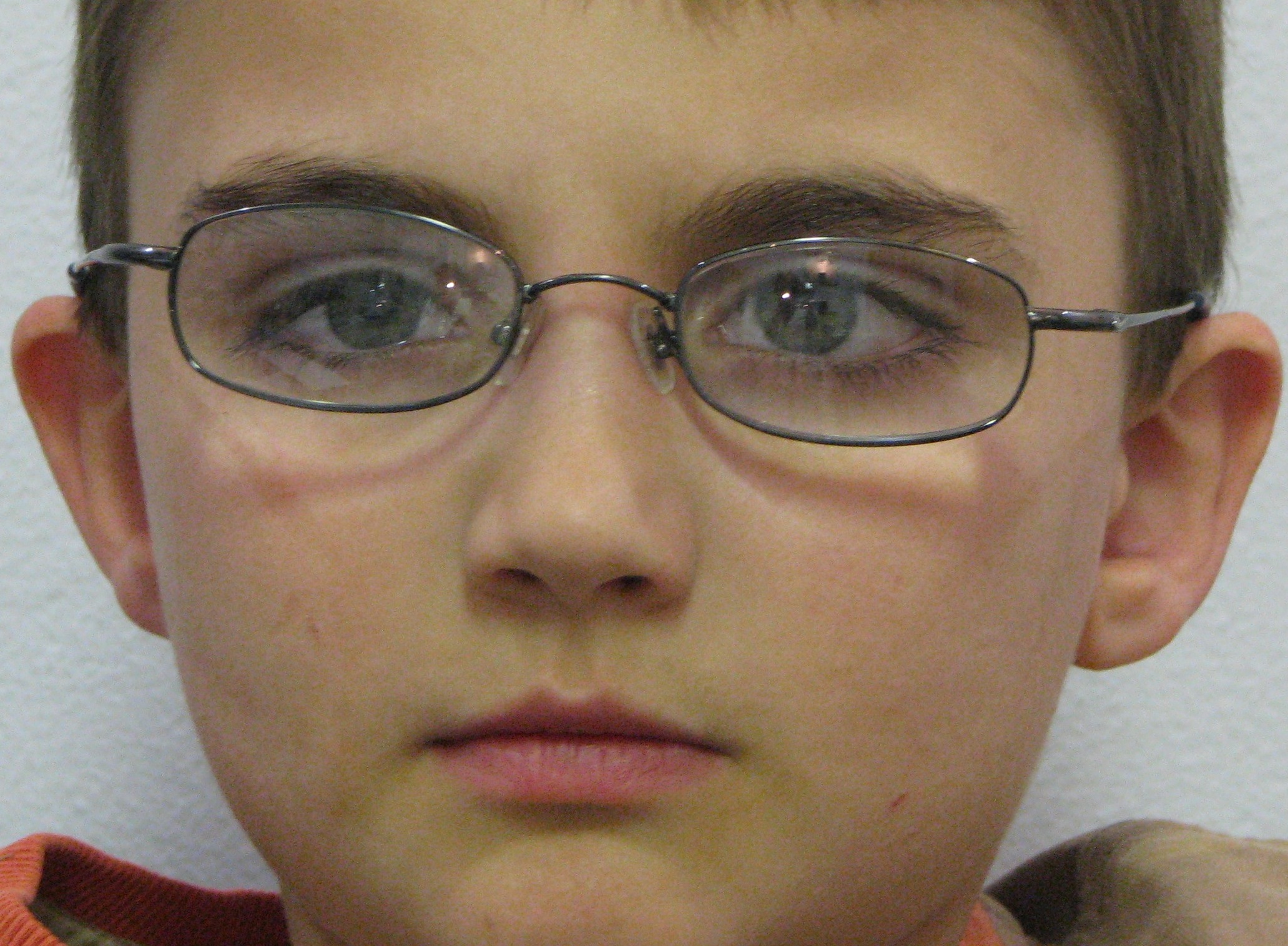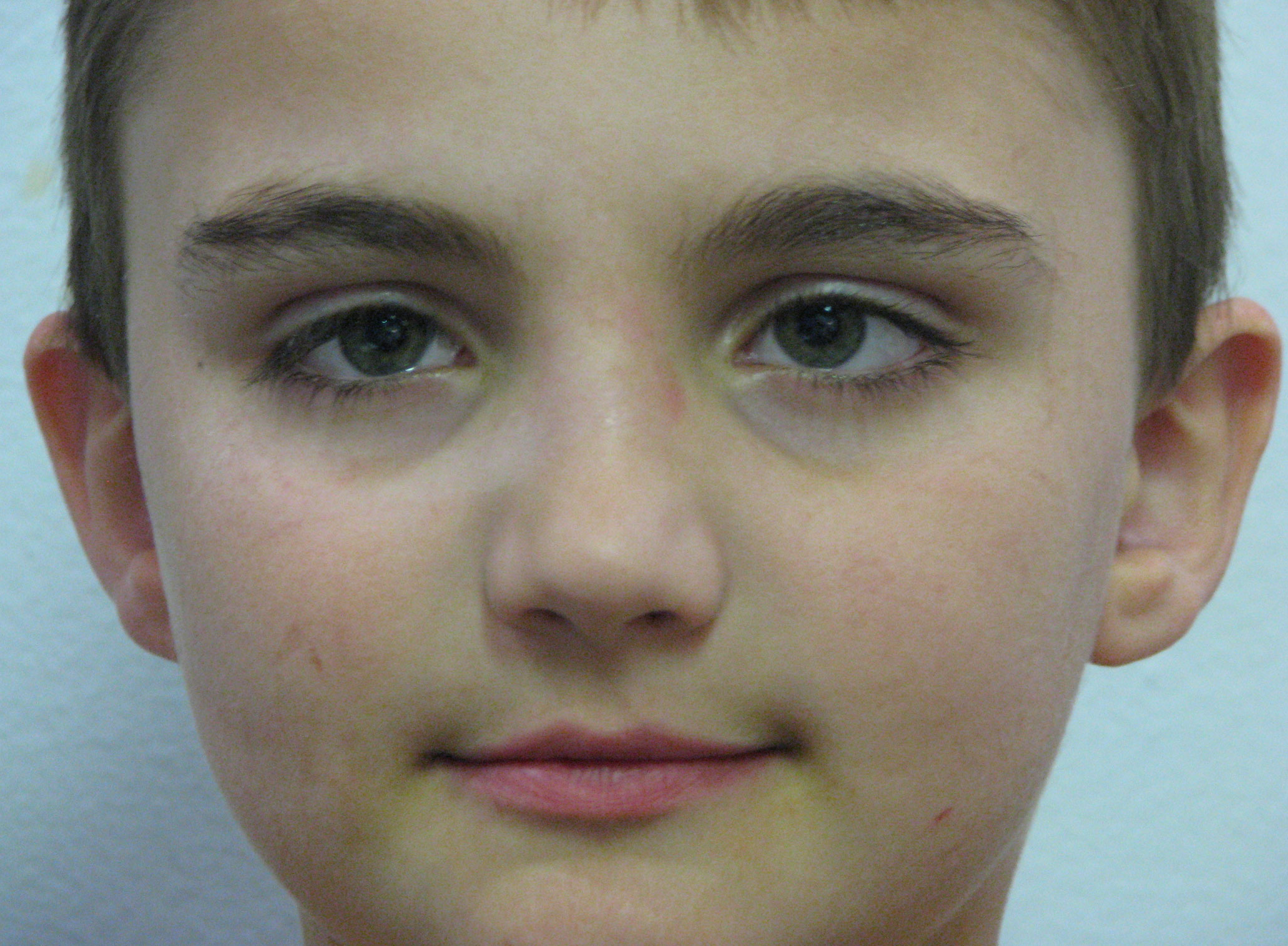6 Strabismus
6.5 Accommodative Esotropia
- Esotropia (ET) linked to accommodation
- Onset 6 months - 7 years (average 2.5 years)
- May be intermittent at onset, (sometimes precipitated by trauma or illness) becoming constant
- Diplopia may occur but usually disappears as the patient develops suppression scotoma
- Approximately 75% have a family history
- Amblyopia common (50%)
- No associated IOOA or DVDs
Accommodative
High AC / A
Mixed (most common)
Definition
Accommodative
Hypermetropia means that a high amount of accommodation (with a proportionate amount of convergence) is required to focus even on a distant target
High AC / A
Accommodation is associated with a dis-proportionately high amount of convergence
Mixed (most common)
Hypermetropia
High AC / A
Accommodative
1.Fully accommodative
Esotropia (ET) fully corrected by full cycloplegic refraction
2. Partially / (Non)
accommodative
ET only partially corrected by full cycloplegic refraction (i.e. still ET for D&N)
Mixed (most common)
Distance prescription corrects distance deviation but a deviation remains at near
CTD / N
Accommodative
ET Distance= ET Near (within 8Δ)
High AC / A
Straight Distance (after correction), ET Near.
ET for near may be reduced or eliminated by a +3.0 add
Mixed (most common)
ET Distance < ET Near (by >8Δ)
i.e. When straight for distance with full cycloplegic correction will still have ET for near.
ET for near may be reduced or eliminated by a +3.0 add
Refraction
Accommodative
Hypermetropia (e.g. +3 to +10D)
High AC / A
Emmetropia (ranges from myopic to high hyperope)
Mixed (most common)
Hypermetropia
AC / A ratio
Accommodative
Normal (e.g. 3-5)
High AC / A
High
Mixed (most common)
High
- Amblyopia is common (50%, especially partially accommodative)
- Abnormal Head Position (AHP)?
- Hirschberg (pupil margin=30Δ, limbus=90Δ) - Esotropia
- (Lids normal)
- (Pupils normal)
- Comitant ET (Measure distance & near as an estimation of AC / A. An ET that is greater for near than distance suggests a high AC / A, but this can only be proven by formal testing- see below)
- A) Without glasses: CTD, CTN
- B) With glasses: CTD, CTN
- (NB: Attempts may also be made to measure the AC / A ratio by the lens gradient method by cover-testing at near with and without +3D lenses)
- Full ductions (Exclude CNVI palsy) ± IOOA
- DVD is uncommon
Often Hypermetropic. Use:
- Cyclopentolate 1%, (Phenylephrine 2.5%) or
- Atropine 1% bd for 3 days prior if dark irides, amblyopic, unsure, unco-operative
Summary
- Fully / Partially / Non-Accommodative ET with presumed Normal / High AC / A
Most accommodative esotropias do not require further investigations. However, neuroimaging (MRI brain) should be considered when the presentation is atypical:
- Acute onset
- Older (>7yrs)
- Incomitant i.e. abduction deficit
- Diplopia, other neurological signs (e.g. CN VI, papilloedema, nystagmus)
- No hypermetropia
Aims:
- Maintain vision (Treat amblyopia / refraction)
- Realign the visual axes (straighten eyes for distance with spectacles)
- Maintain or restore good binocular function (predict fusion potential given age, duration, vision) - most get monofixation syndrome
- Alleviate symptoms (asthenopia, diplopia)
Accommodative Component
High AC / A Component
Fully
Partially / (Non)
Patching
Spectacles
Accommodative Component
Correct refraction (Cycloplegic refraction- Full time spectacle wear)
High AC / A Component
Correct refraction (get straight for distance first before any bifocals)
Spectacles
Accommodative Component
If ET for distance persists:
- Check spectacle prescription
- Repeat cycloplegic refraction (consider atropine) and prescribe any residual latent hyperopia.
If only ET for near persists (i.e. mixed), consider bifocals.
High AC / A Component
Options include:
- Observation if asymptomatic, cosmetically acceptable (advocates argue there is little functional disadvantage if straight for distance but ET for near).
- Bifocals if can correct to ET for near <10Δ with improvement in near stereopsis. Prescribe the minimum plus for close work e.g. +3D for 1 / 3m executive flat-top through pupil or short corridor wide reading-zone multifocal lens.
- Spectacles are the mainstay of management of most accommodative esotropia
- Prescribe spectacles prior to amblyopia patching (patch when vision plateaus)
- Warn parents “ET will be worse without glasses” and that glasses are for alignment not vision. (If not tolerated, try g. cyclopentolate 1% or g. atropine ou daily until they can)
- Try to wean script from 6yrs or when child complains of blurred vision (reduce in + 0.5D increments). Most patients will require spectacles until their teenage years (especially if refraction > +3D)
Accommodative Component
High AC / A Component
Fully
Partially / (Non)
Surgery
Surgery can only be considered once:
1. Refraction has been corrected for distance
2. Amblyopia has been treated (or attempted)
3. There is a stable angle of deviation
Consider surgery (only ~20% will require) if
1. There is potential for maintaining / improving binocular single vision
2. Patient or family is concerned by cosmesis and reassure them the surgery is reconstructive, not cosmetic
Accommodative Component
Only operate on non-accommodative component (make eyes straight with glasses)
- Bilateral MR recession (BMRR)
- MR recession / LR resection (if amblyopic eye)
High AC / A Component
Only operate on non-accommodative component
Options include:
- BMRR (operate for distance)- tends to under correct
- BMRR ± Augmented surgery: operate for average of D and N with bifocals e.g. 10ΔD, 30ΔN: operate for 20)
- BMRR (operate for near) - risks overcorrecting
- BMRR + Faden operation- posterior fixation suture can be used if straight for distance, ET for near i.e. high AC / A. This is often performed as a second operation → If develops consecutive XT after surgery, reduce the strength of the spectacles.
- Follow-up at least 6-monthly (at least annual refraction)
- Monitor for amblyopia, under-correction
Summary Management Algorithm [ii]
Courtesy of Dr Ross Fitzsimmons
Normal AC / A
(ET Distance = ET Near)
High AC / A
(ET Distance < ET Near)
Fully Accommodative
Normal AC / A
(ET Distance = ET Near)
Spectacles
High AC / A
(ET Distance < ET Near)
Bifocals
All rights reserved. No part of this publication which includes all images and diagrams may be reproduced, distributed, or transmitted in any form or by any means, including photocopying, recording, or other electronic or mechanical methods, without the prior written permission of the authors, except in the case of brief quotations embodied in critical reviews and certain other noncommercial uses permitted by copyright law.
Vitreoretinal Surgery Online
This open-source textbook provides step-by-step instructions for the full spectrum of vitreoretinal surgical procedures. An international collaboration from over 90 authors worldwide, this text is rich in high quality videos and illustrations.


